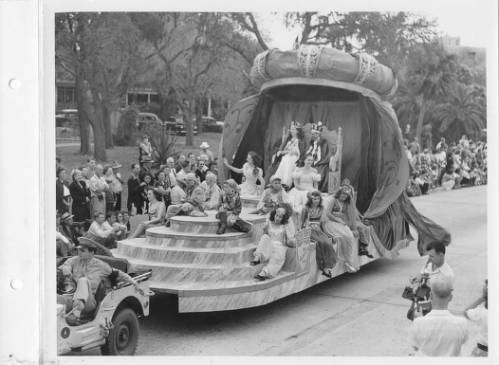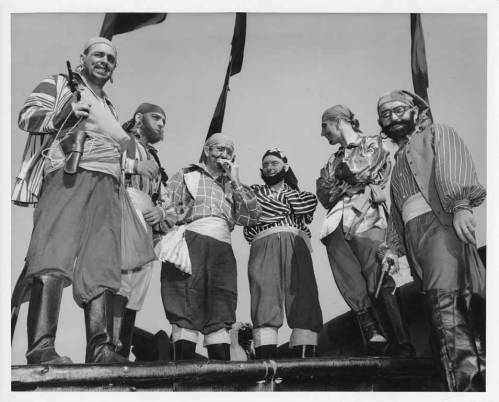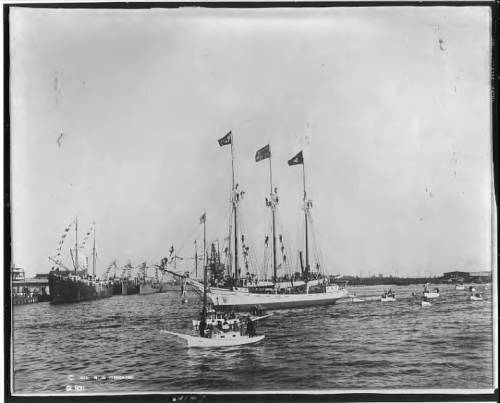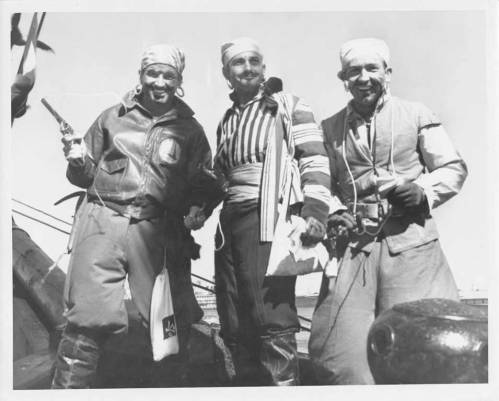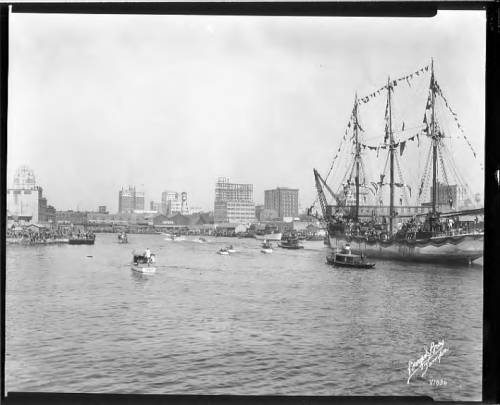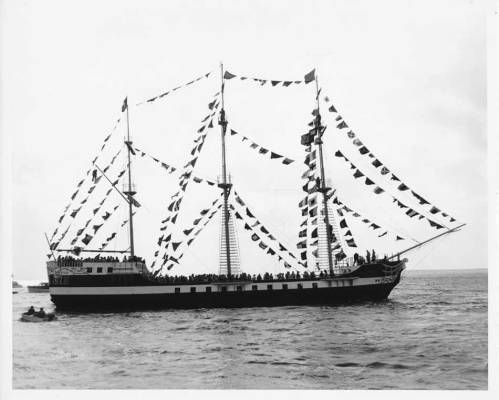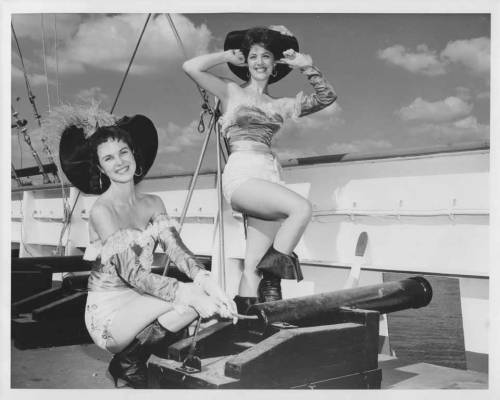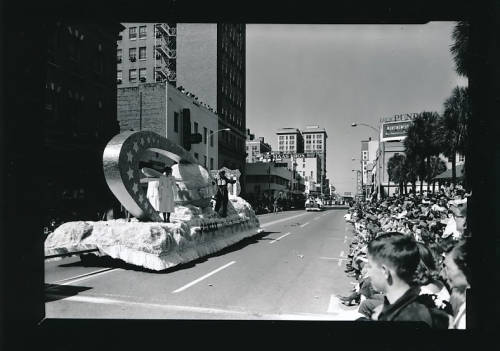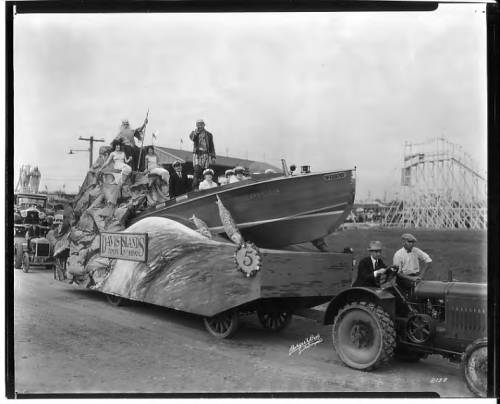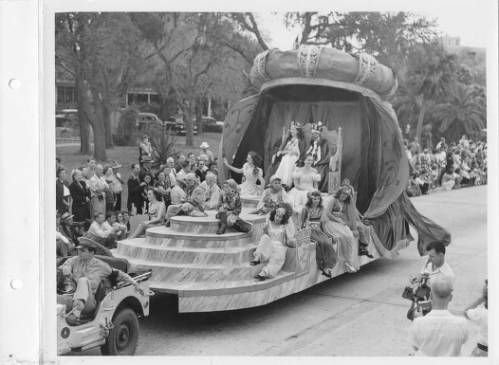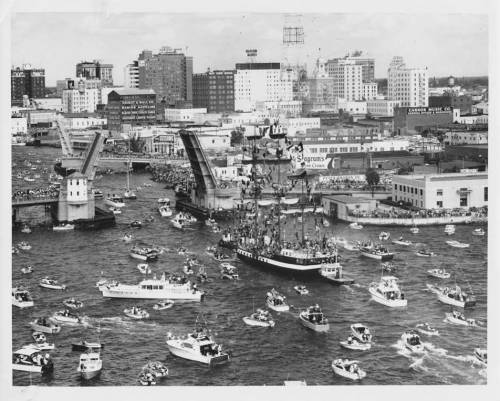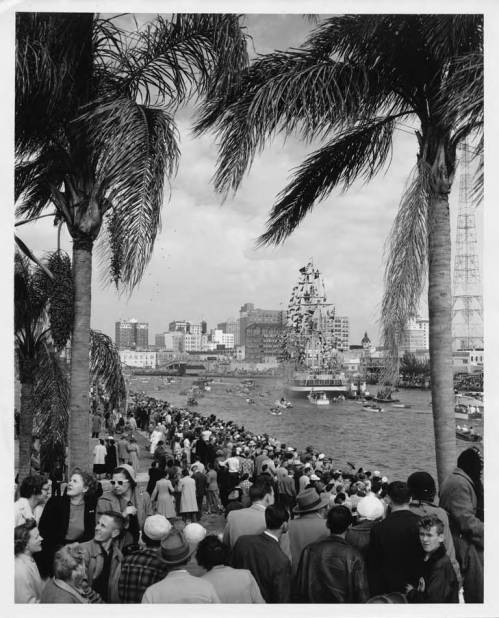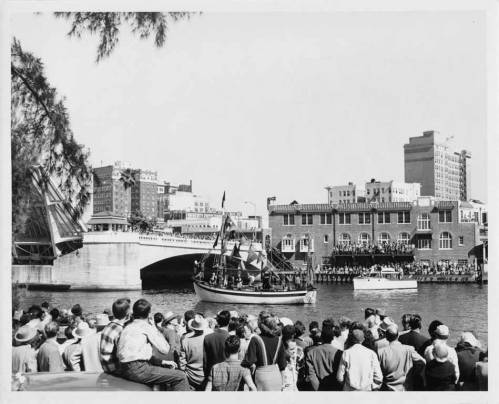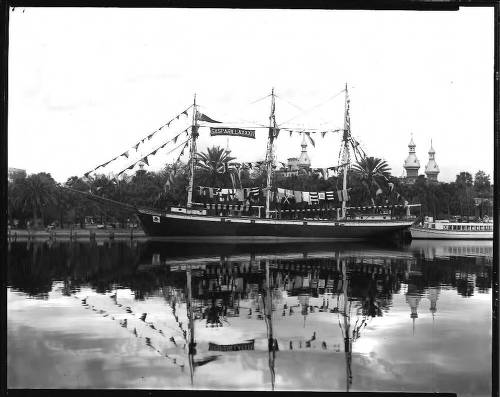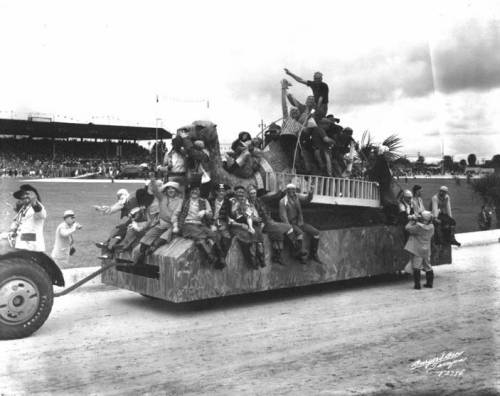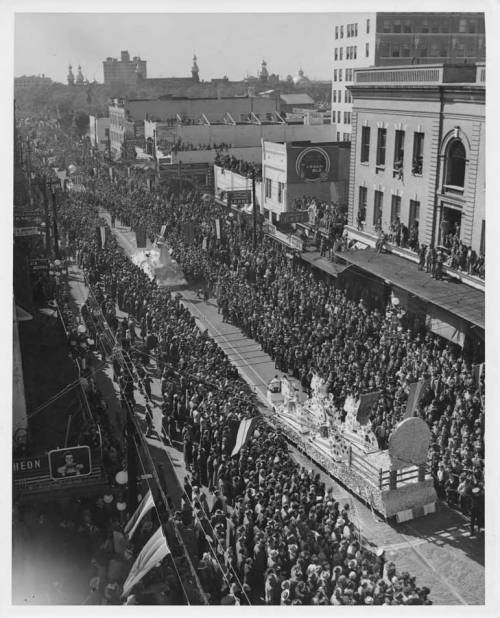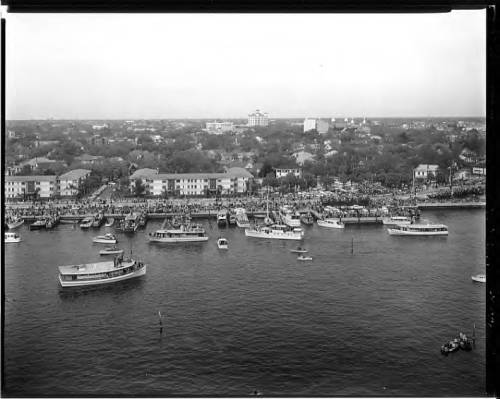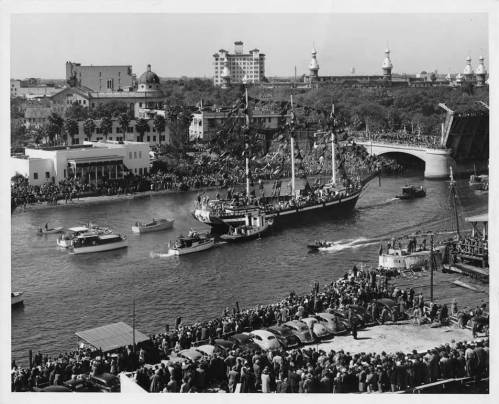Gasparilla History
Invading Tampa Since 1904
What is Gasparilla?
Gasparilla is Tampa’s signature event, celebrated annually since 1904 and hosted by Ye Mystic Krewe of Gasparilla. Each year, a merry band of pirates invades the city, culminating in a celebratory parade down Tampa’s famed Bayshore Boulevard.
How did Gasparilla begin?
Just after the turn of the 20th century, Tampa’s flourishing economy and evolving skyline signaled a burgeoning city on the rise. Local leaders wanted to promote the city’s annual May Day celebration, growing it to a multi-day festival. In the Spring of 1904, Tampa Tribune Society Editor Mary Louise Dodge was helping to plan the event theme when George Hardee suggested the legend of Gasparilla. Soon after, Hardee formed a krewe of 50 men, and the Tampa Tribune began publishing a series of letters from Ye Mystic Krewe of Gasparilla. Each letter detailed a pirate invasion by King Gasparilla and his court. When the May Day Festivities arrived, Ye Mystic Krewe of Gasparilla pirates appeared on horseback throughout the city, to the delight of locals. Officials soon decided that Gasparilla would be an annual part of the festivities.
Who is Jose Gaspar, and what is the legend behind Gasparilla?
Jose Gaspar, or Jose Gasparilla as he is also known, is the famed Spanish Pirate who invaded the coast of Florida hundreds of years ago. A former member of the Spanish Navy, Gasparilla was well-educated and intelligent. During his pirating years, he captured many ships, earning a fortune in treasure, most of which remains lost to this day. In 1821, a US Navy ship in disguise confronted Gasparilla’s ship, and a furious battle ensued. With defeat on the horizon, Gasparilla tied himself to an anchor chain and jumped into the sea, never to be seen again.
Official Gasparilla Festivities
What can attendees expect at Gasparilla Today?
For more than 100 years, Tampa’s longest-standing tradition has celebrated the legendary life of Jose Gaspar and the revelry of his legion of pirates! Today, Gasparilla events attract fans from all over the United States to Tampa Bay to participate in various activities.
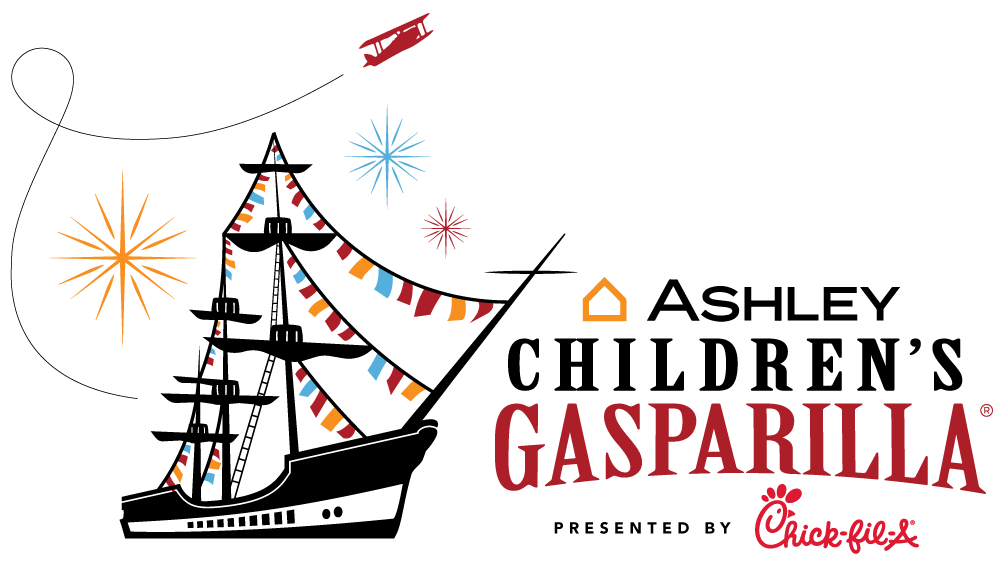
The Ashley Children’s Gasparilla Presented by Chick-fil-A Tampa Bay
Held annually on the second to last Saturday of January, this event welcomes our smallest mateys to a full day of fun. Family-friendly festivities include a Bicycle Safety Rodeo, Preschoolers’ Stroll, Pirate-technics fireworks extravaganza, and the largest children’s parade in the United States. More than 150,000 parents and little mates attend annually, gathering beads from more than 100 units, including Krewe floats, civic groups, bands, and dance performers.
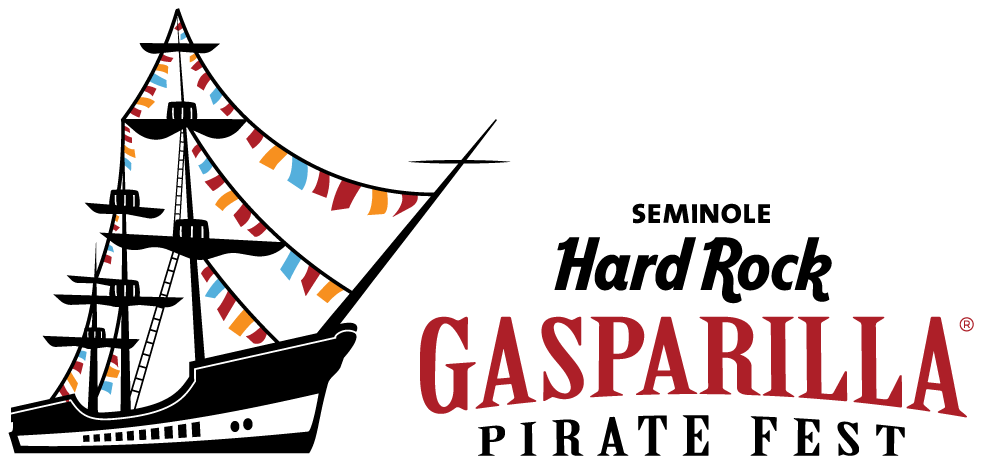
Seminole Hard Rock Gasparilla Pirate Festival
On the last Saturday of January, more than 300,000 pirate-garbed onlookers gather for the Seminole Hard Rock Gasparilla Pirate Festival. The day begins as hundreds of vessels form a flotilla following the famed Jose Gasparilla II, the world’s only fully-rigged pirate ship, to invade the city of Tampa and reclaim its key from the Mayor. With the key securely in hand, Ye Mystic Krewe of Gasparilla leads a celebration of more than 100 floats down Tampa’s famed Bayshore Boulevard and into downtown Tampa. The festival is recognized nationwide as Tampa’s signature event and is the third-largest parade in the United States.
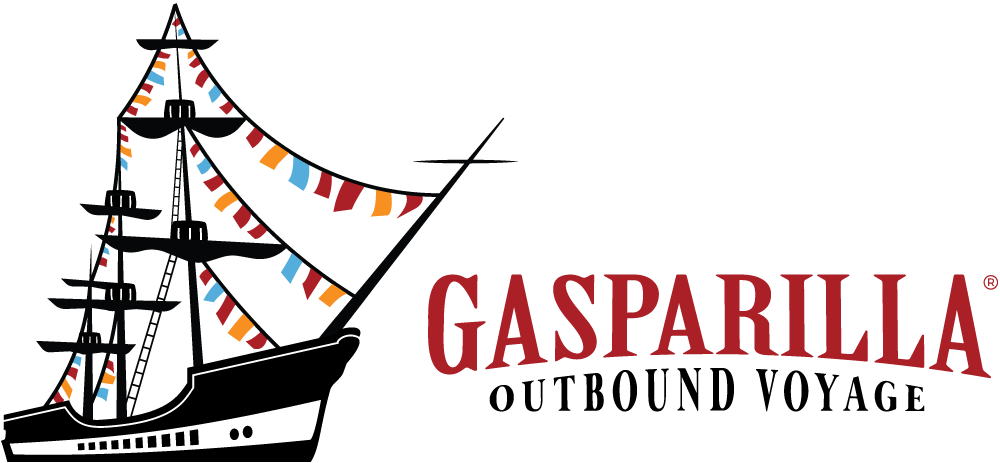
Gasparilla Outbound Voyage
Typically held in early March, this event celebrates our triumphant pirates’ return to sea. Ye Mystic Krewe of Gasparilla welcomes pediatric cancer survivors aboard the Jose Gasparilla II, the world’s only fully-rigged pirate ship, as “Pirates for the Day.” The hearty band of buccaneers and little mateys terrorize the waters around Davis and Harbour Islands before storming the docks at Sparkman Wharf.
Gasparilla is a free community event, and there is no cost to attend. Ensure premium viewing and the best chance to grab your favorite beads with reserved seating at either Children’s Gasparilla or Gasparilla Pirate Fest.
Visit GasparillaTreasures.com for details.
By The Numbers
Years Celebrated
Participating Floats
Flotilla Vessels
Krewes
Parade Attendants
The History of the Gasparilla Parade
1904 – The First Gasparilla Parade is held as part of Tampa’s May Day festivities. The invasion takes place on horseback.
1910 – Gasparilla festivities are held for the first time in a few years after a short hiatus from 1907-1909.
1911 – Our swashbuckling krewe of pirates invade by ship for the first time.
1918-1919 – The Gasparilla carnival is not held due to World War I.
1937 – Ye Mystic Krewe of Gasparilla sails the first Krewe-owned ship, the Jose Gasparilla I, during its annual invasion.
1942-1946 – World War II leads to Ye Mystic Krewe of Gasparilla canceling until the war ends.
1947 – The first Gasparilla Children’s Festival is held, a shorter version featuring local children’s groups from throughout Hillsborough County.
1954 – The Jose Gasparilla II sets sail for the first time as part of the 50th Anniversary Celebration.
1969 – Pirates begin the tradition of visiting hospital pediatrics wards the week before the parade to bring the festival to children who could not attend.
1975 – The Jose Gasparilla II sails up the Hillsborough River on invasion day for the last time due to the completion of the Crosstown Expressway.
1978 – The First Gasparilla Distance Classic and Run for Fun is held on Invasion morning.
1988 – The Gasparilla Invasion and Parade of Pirates moves from being hosted on a Monday to a Saturday.
1997 – George Steinbrenner funds the YMKG Scholarship Foundation, paving the way for the Ye Mystic Krewe of Gasparilla Community Fund.
2001 – The Gasparilla Invasion and Parade of Pirates moves to the last Saturday in January to coincide with Super Bowl XXXV.
2002 – Children’s Gasparilla is held on a Saturday for the first time in the event’s history.
2021 – Gasparilla festivities are canceled due to the Covid pandemic.
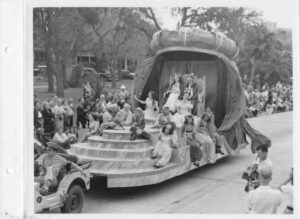
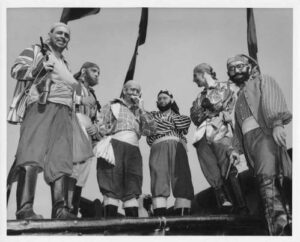
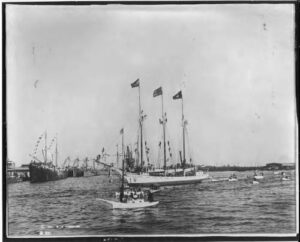
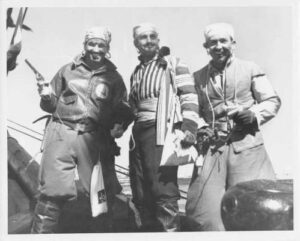
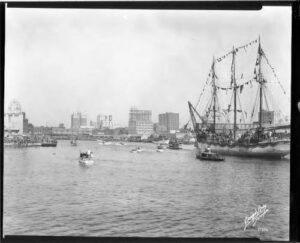
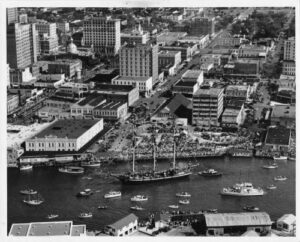

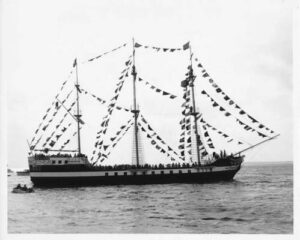
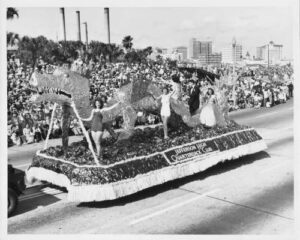


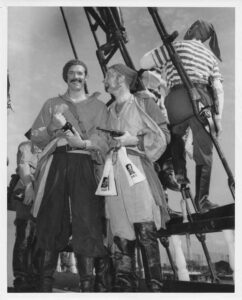
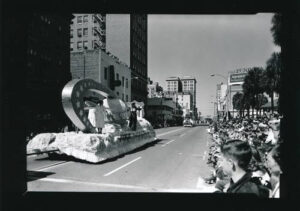
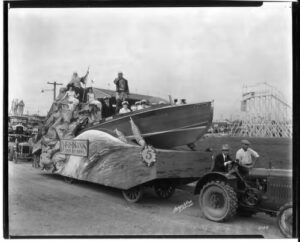

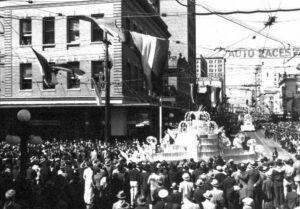

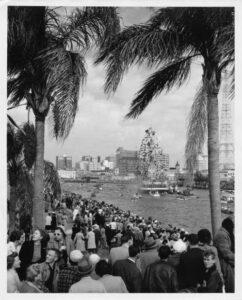
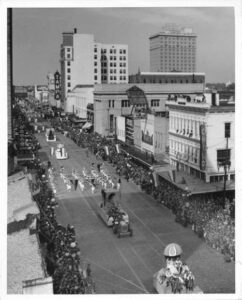

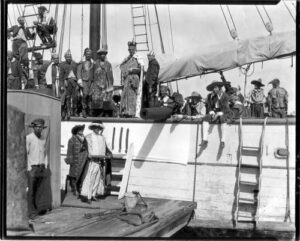
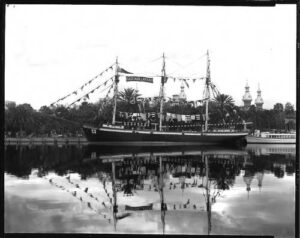
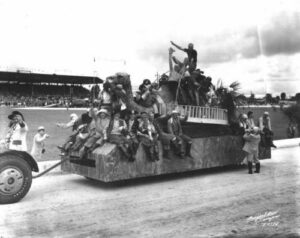
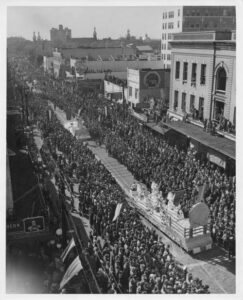



Historical Photos courtesy, Tampa-Hillsborough County Public Library System
